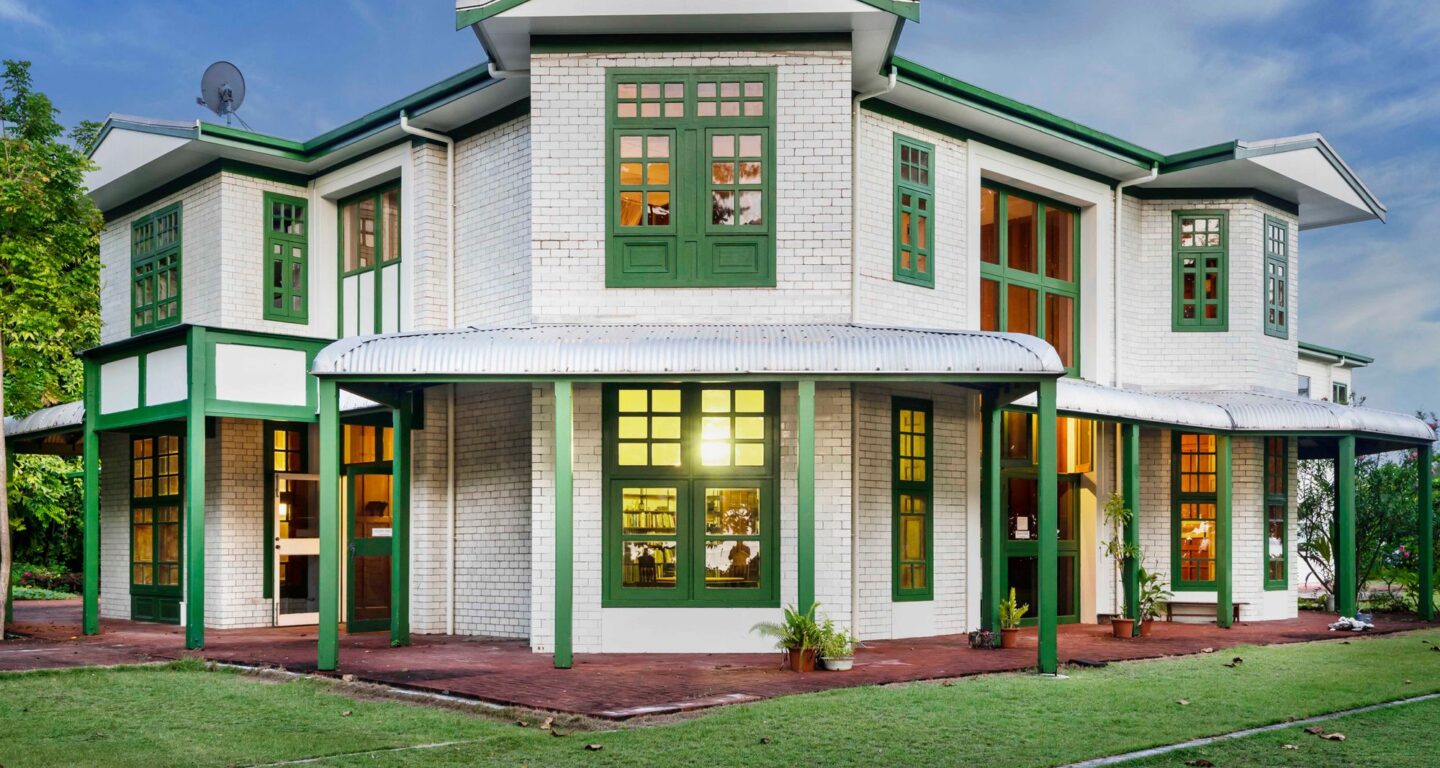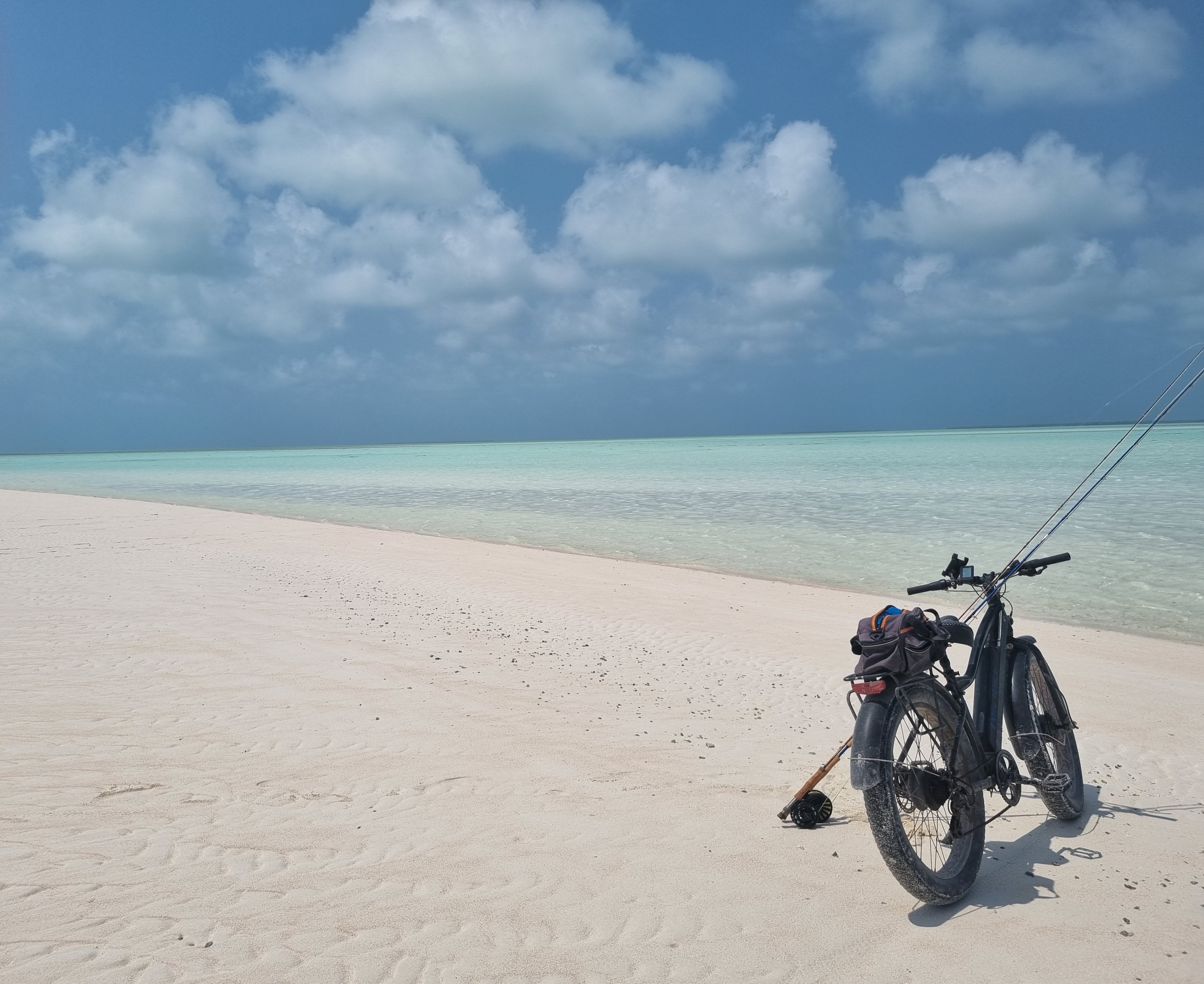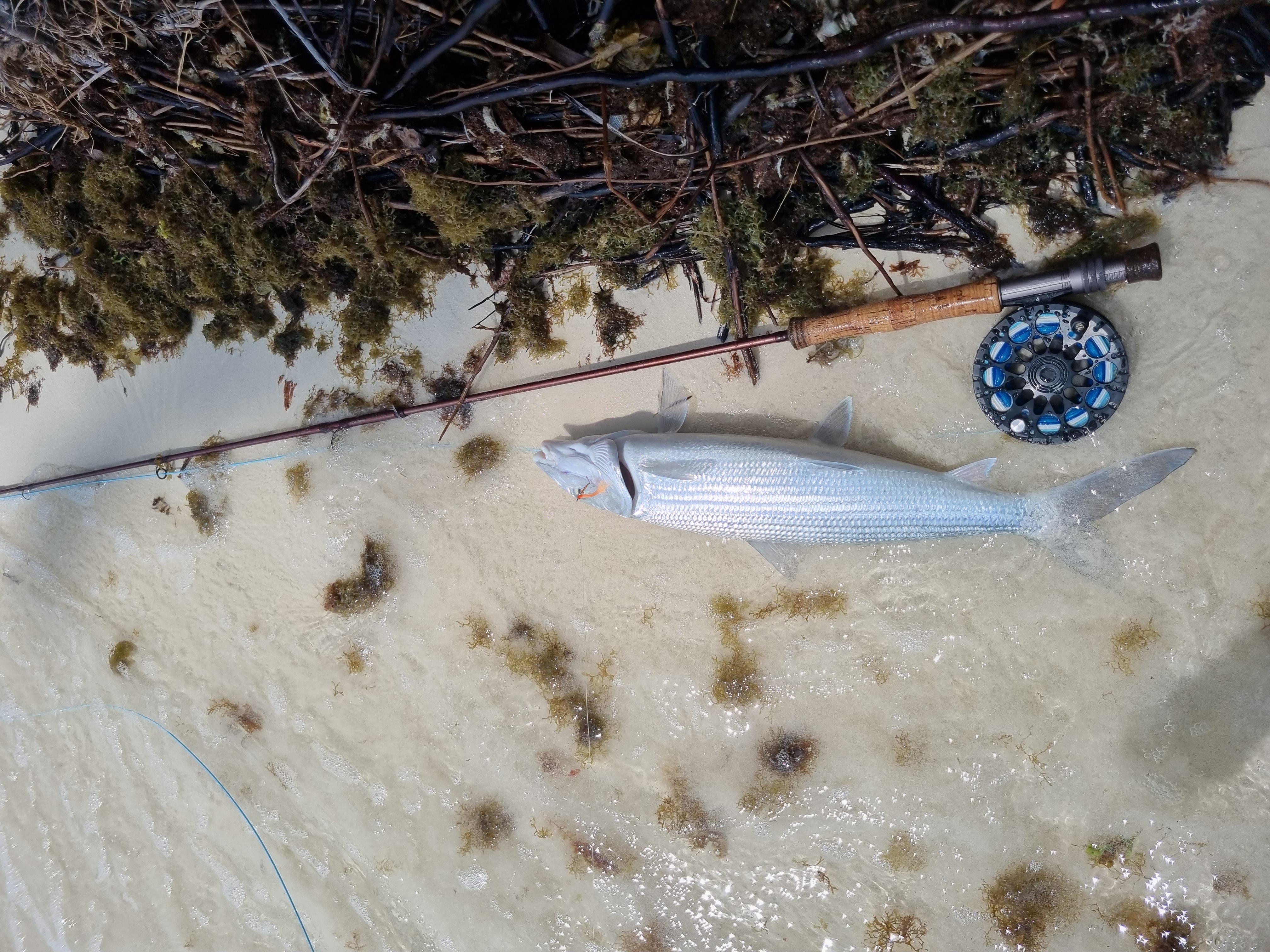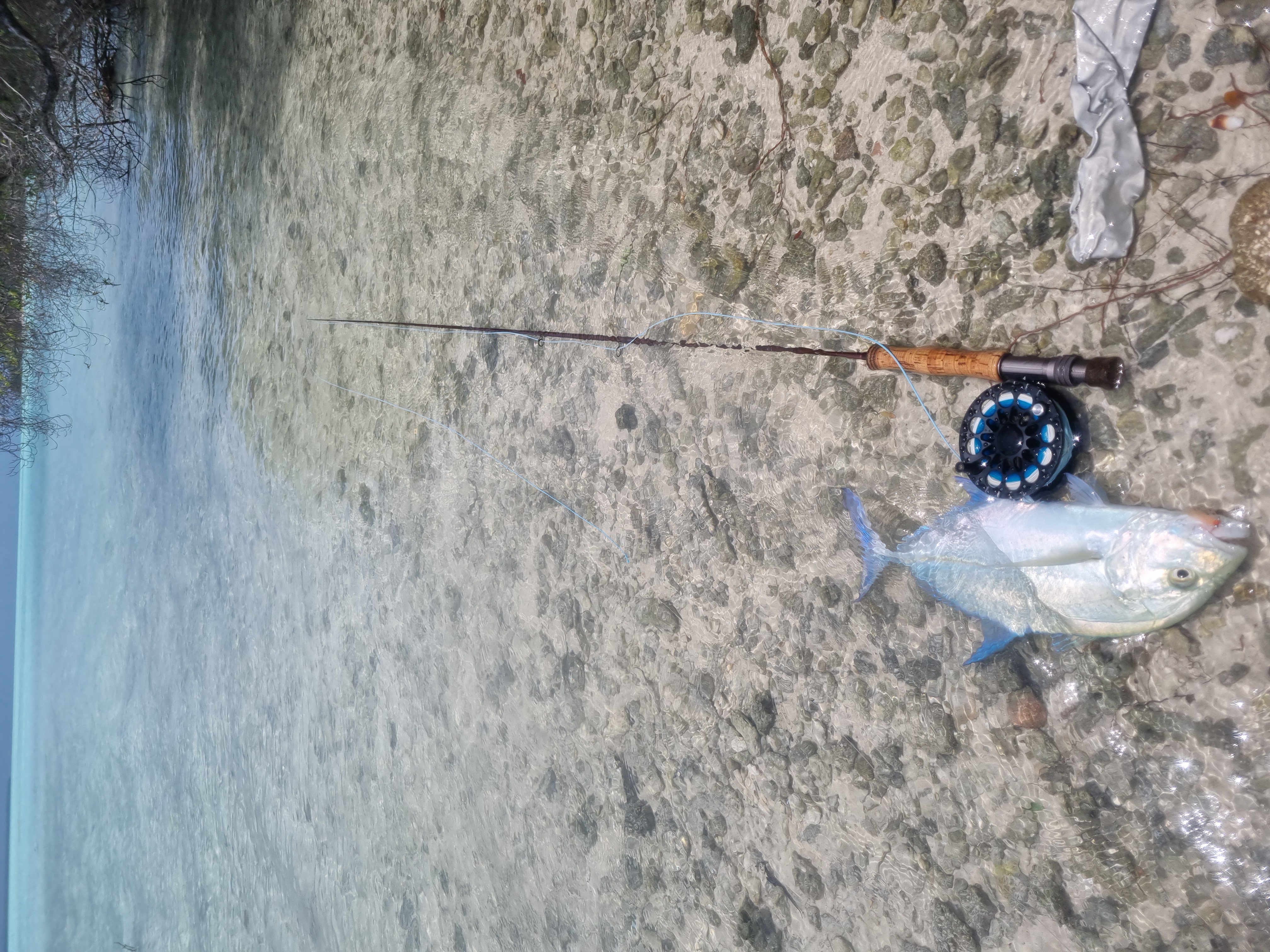Who doesn’t love ticking off places on their bucket list? Cocos Keeling was one such destination I had always wanted to visit. After enjoying bonefishing in the Mexican Caribbean, where these fish average around 2 pounds, I could hardly imagine the power and speed that a double-digit bonefish would deliver.
In May 2023, I started contemplating my next big fishing trip on the flats. I wasn't sure where I'd go, but I was determined to fish in such environments. At the time, I was in Queensland and had several options in mind: New Caledonia, Christmas Island, or Cocos Keeling. Any of these locations would be a prize.
I always like to have my gear and flies ready for the sort of fishing trip I have in mind, since you never know when an invitation or opportunity might arise. If a lucky opportunity presents itself, I want to be able to take advantage. Mentally, I began preparing, and the first thing I did was update my tying vise. I knew I needed a vise that could handle larger hooks (up to size 4/0) while also accommodating smaller hooks of size 6 or even smaller. I settled on the Stonfo Kaiman model, which impressed me with its quality materials and grip strength. What I didn’t foresee at the time was that I would later end up working at the place where I bought the vise (The Flyfisher).
With my new Stonfo vise on the desk, I started tying patterns for bonefish and GTs. Shortly after, I received an offer to work at a hotel in Cocos Keeling. Naturally, I didn’t hesitate to accept. I already had some of my gear ready, and a couple of months of fishing awaited me at my dream destination.
Cocos Keeling is a very remote location, with the only two flights a week coming in from Perth. Once on the islands, there is no cell service, and amenities are minimal. There are just a few supermarkets and restaurants, and no fishing tackle shop. Therefore, visitors must go fully prepared in advance, bringing spare parts of all kinds; plus rods, reels, lines, flies, etc. It’s also advisable to bring any necessary medications, a first aid kit, and, if possible, some canned food or vitamins. You’ll be under the sun all day, walking for hours on the sand, with the water at knee or waist height.
I would be staying (and working) at Oceania House, a place with an incredible history. The house itself is a living museum, built by the original king of the island when it was a coconut plantation. The hotel is located on Home Island, which is reached by ferry from West Island (where the airport and most services are) several times a day. Among the interesting facts about this hotel, the island was bombed by the Japanese during World War II, and a bomb fell directly on this building! It was also visited by the late Queen Elizabeth in 1973.

Upon arriving, one quickly realises how remote and untouched the area is. The tranquillity is absolute, and nature is completely wild. As soon as you approach any shoreline, it’s highly likely that you’ll start spotting bonefish, sharks, truly giant turtles, and all sorts of other fish and birds.
The plan was to fish 100% DIY. I started marking interesting spots on the map. I would be staying on Home Island, and on its eastern side. The fishing strategy was to try and fish, if possible, during the rising tide, allowing the first hour to pass, since without a boat, the flats would be completely dry and devoid of fish. Considering that there are two low tides during the day, the ideal scenario would be to choose a week where the second peak of the highest low tide occurs in the morning, allowing the best flats conditions between 10am and 2pm, when light/ visibility is also at its best.
It may take a couple of days for your eyesight to adapt to spotting bonefish on the flats, especially on overcast days - a regular occurence at Cocos. Therefore, a good plan is to take advantage of sunny moments to walk slowly across a flat, and then, during overcast periods, simply stop and wait. Avoid blindly walking over a flat: the bonefish will surely be there, but there's a risk of spooking them if moving carelessly.
When I first arrived at Cocos, I was aware by reputation that it was undoubtedly an excellent spot for bonefishing, and I expected to find a considerable number of small to medium-sized fish, with a few larger specimens. However, once I started fishing there, I was pleasantly surprised not only by the quantity but also the quality, with average sizes much larger than I anticipated.
Gear-wise, I used a 10' tapered leader of 20 lb, an 8-weight rod, and a floating line with a long and not too aggressive taper, allowing for the best possible presentation and distance. Generally, bonefish in Cocos are not skittish, but if focusing on trophy bonefish, they are a bit smarter than their smaller cousins, and a good presentation will make all the difference. As a general rule at Cocos, we can say that large bonefish are found alone or in pairs, while medium-sized ones often form larger schools.

A typical fishing day I often repeated in Cocos, began with me biking or driving a buggy to the southern tip of Home Island. From there, I would walk across the channel to the next islet, where the flats begin again. Instead of starting to fish right away, I would continue walking to two more islets. Then, I would return while fishing with the sun and wind at my back. This approach also allowed me to cast directly at the fish entering the flat.
In this area, it’s quite easy to confuse bonefish with sea cucumbers, and also to mistake schools of mullet for schools of bonefish. However, it’s worth noting that there may be bonefish within a school of mullet, so taking a shot is often a good idea regardless.
The east side of Home Island also offers bonefish action. Here, the bottom features coral and seagrass, which may make it somewhat challenging to spot them. Additionally, there's a constant headwind. On the plus side, this sector offers a greater chance of seeing triggerfish and bumphead parrotfish feeding on the coral.
Regarding flies, the classic Gotchas and Crazy Charlies in pink, tan, and peach fox tail worked very well for me. It’s important when tying them not to overload them with too much material and flash, and to have a variety of weights. I used small chain eyes 90% of the time to suit the shallow water, and also to allow for better presentation.
Using fluorocarbon leaders and tippets is highly beneficial, as it provides better abrasion resistance around the hard sand and coral bottoms. Furthermore, this material does not reflect light, which helps the bonefish approach the fly with confidence. And fluorocarbon sinks better than monofilament, allowing for a more natural presentation since bonefish feed on the bottom. The hooks I used were Ahrex SA210 size 4 and Gamakatsu SL12S in size 2.

As for the retrieve, what worked best for me was casting slightly ahead of the fish, letting the fly touch the bottom, and then performing long, slow strips. You see the bonefish darting towards the fly, then feel the tension in the line-hand while stripping. At that moment, remember to set the hook with a strip-strike rather than a rod-lifting trout strike.
Always let the fish take all the line it wants to during the first run; then tighten the drag a bit and work the fish with the rod butt to tire it out. Having the drag set too light will prolong the fight, as bonefish will run a lot if allowed. (It’s essential to have a reel with a sealed drag that is as smooth as possible.)
An advantage of fishing 20lb tippet is more pressure can be exerted without fear of a break-off. Shortening the fight will help the fish's recovery. And let’s not forget there are quite a few blacktip sharks in Cocos that will come looking for a bit of free sashimi! Having a heavier tippet helps accelerate the fight and reduce the chances of a hooked fish ending up in the jaws of a shark.
Besides bonefish, the variety of species at Cocos can be overwhelming. In a single fishing session, you may encounter several species, which, although they can be caught with the same gear and flies, I recommend tackling species individually to maximise success.
At Cocos, I reached the point where I solely focused on catching large bonefish. This place allows you the luxury of passing up entire schools of medium bones, knowing there's a good chance of seeing very large bonefish several times a day.
Overall, I spent eight weeks there, and I had the opportunity to fish almost every day, dedicating many full days to fishing. The results exceeded all my expectations. The island boasts an excellent population of bonefish, and the locals take great care of the place. Additionally, there’s the opportunity to fish for GTs, bluefin trevally, permit, bumpies, triggerfish, and even milkfish, positioning Cocos as one of the top flats fishing destinations in the world.

When it comes to the weather, Cocos Keeling is located in the middle of the ocean, meaning there’s little shelter from the wind, which is consistently present from the south and southeast. However, due to its circular shape, I was able to find sheltered spots in the interior, allowing us to fish with the wind at our backs. I spent October and November there, and to my delight, there was very little rain. As already mentioned, most days were overcast. Despite this, the cloud never prevented me from enjoying my fishing adventures.
Regarding transportation within the island, West Island offers bicycle, car, and buggy rentals, while Home Island also provides buggy and bicycle rentals. I recommend renting one of these options to reach the fishing spots more quickly and comfortably. Fortunately, the hotel where I stayed had a buggy and a bicycle available for my use, making it easy for me to get around the island. On West Island, there is a bus service from the ferry dock to the airport, which is timed to coincide with the ferry schedule.
One question I often ask myself when visiting a new fishing spot, restaurant, or hotel is whether I would return. In the case of Cocos, I would definitely go back to apply the lessons learned from my stay, and to explore and dedicate more time to other species, mainly GT and permit. There were also local guides I missed the opportunity to fish with, and I would completely embrace that experience if I ever visit again.
Cocos Keeling offers a unique blend of breathtaking scenery and unparalleled fishing opportunities. The natural beauty of the islands, combined with the warmth of the local community, creates an extraordinary atmosphere for any angler. From the moment I arrived on the islands to the final cast of the last day, each hour was filled with excitement and discovery. The thrill of pursuing bonefish in crystal-clear waters, and the tranquillity of the untouched landscapes, made the experience truly exceptional. Cocos Keeling is indeed a special destination for flyfishers.
Nahuel Homene works fulltime at The Flyfisher in South Melbourne. Originally from Argentina, Nahuel's flyfishing exploits are legendary and he loves sharing his knowledge with all who visit the shop. Nahuel's streamer fly-tying skills are like none we've ever come across.















